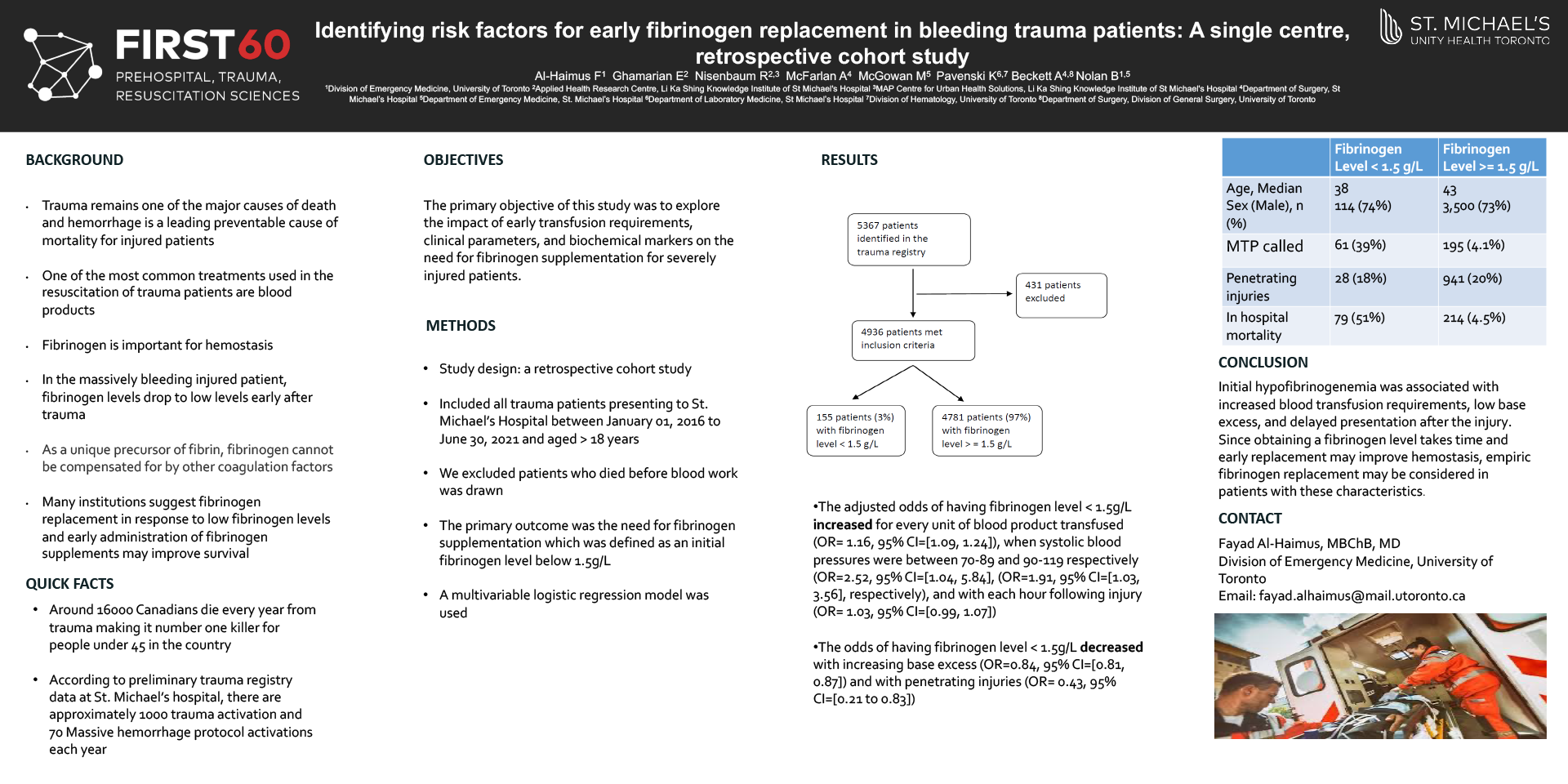|
Abstract:
Title:
Identifying risk factors for early fibrinogen replacement in bleeding trauma patients: A single-center, retrospective cohort study
Authors:
Fayad Al-Haimus, Ehsan Ghamarian, Rosane Nisenbaum, Amanda McFarlan, Melissa McGowan, Katerina Pavenski, Andrew Beckett, Brodie Nolan
Background:
Trauma remains one of the major causes of death and hemorrhage is a leading preventable cause of mortality in injured patients. In a bleeding trauma patient, fibrinogen level drops significantly and early on in resuscitation. Fibrinogen is critical for hemostasis and its early replacement may improve survival.
The primary objective was to identify characteristics associated with a low fibrinogen level in bleeding injured patients as understanding them may identify patients who would benefit from early fibrinogen replacement.
Methods:
This is a retrospective cohort study of trauma patients presenting to a single Level 1 trauma center between 2016 to 2021 and aged >18 years. We excluded patients who died before laboratory sampling. The primary outcome was an initial fibrinogen level below 1.5g/L indicating the need for fibrinogen supplementation. A multivariable logistic regression model explored the association between base excess, injury type, blood components received, time from injury, and systolic blood pressure with an initial fibrinogen level of <1.5g/L.
Results:
A total of 4936 patients met inclusion criteria, of which 155 (3%) patients had initial fibrinogen level of <1.5g/L. The median age was 43 years and 73% were male.
The adjusted odds of having fibrinogen level <1.5g/L increased for every unit of blood component transfused (OR=1.16, 95%CI=[1.09, 1.24]), when systolic blood pressures were less than 90 and 90-119 respectively (OR=2.52, 95%CI=[1.04, 5.84], (OR=1.91, 95%CI=[1.03, 3.56]), and with each hour following injury (OR=1.03, 95%CI=[0.99, 1.07]). The odds of having fibrinogen level <1.5g/L decreased with increasing base excess (OR=0.84, 95%CI=[0.81, 0.87]) and with penetrating injuries (OR=0.43, 95%CI=[0.21 to 0.83]).
Conclusion:
Initial hypofibrinogenemia was associated with increased blood transfusion requirements, low base excess, and delayed presentation after the injury. Since obtaining a fibrinogen level takes time and early replacement may improve hemostasis, empiric fibrinogen replacement may be considered in patients with these characteristics.
|


